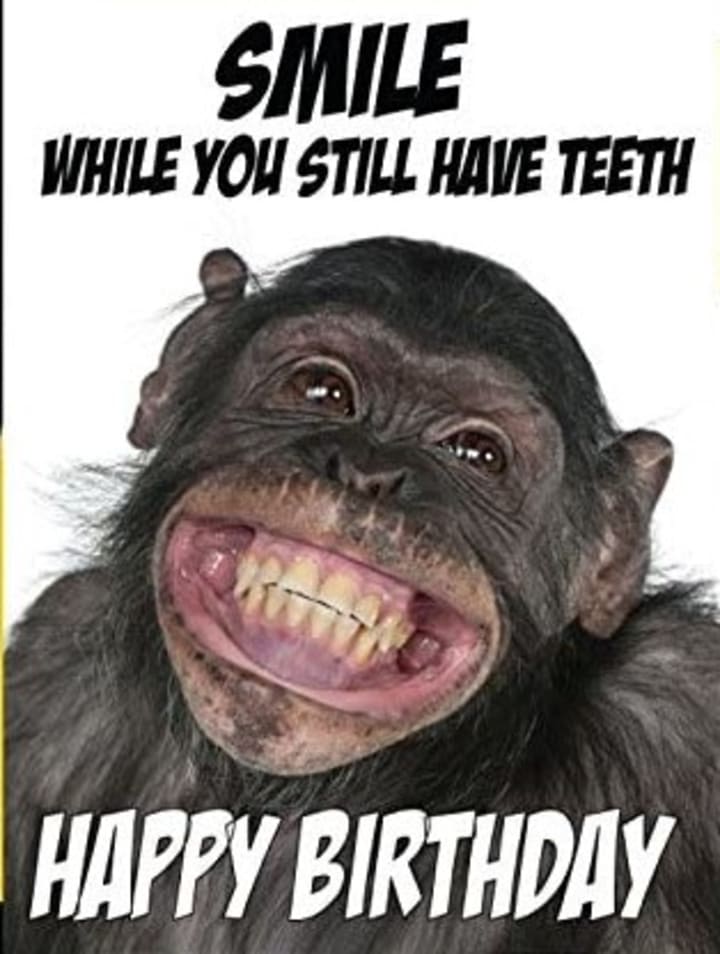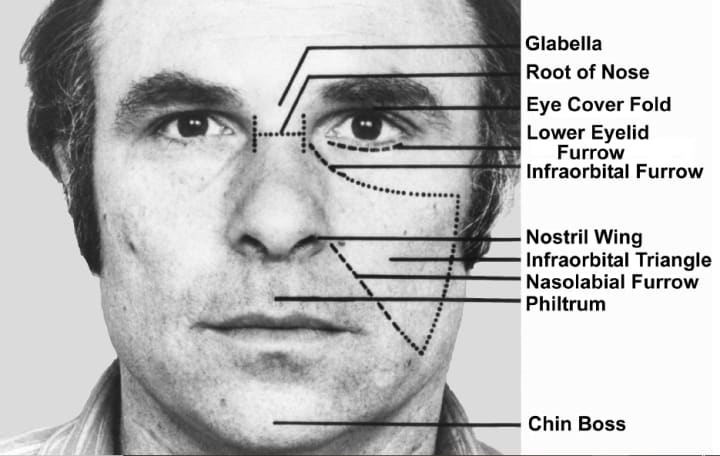
Happiness. A good feeling brought on by joy, accomplishment, adventures, and many other things. Things that make you smile. On the flipside, sometimes a smile can be the facilitator for a spark of happiness. It is the most jovial chicken-and-egg situation.
Anger. Embarrassment. Fear. Nervousness. These are things that aren't immediately associated with smiles and yet, there are smiles that depict these very emotions. Through many years of research, psychologists and biologists have discovered upwards of 19 types of smiles, although only around 6 of them depict positive emotion. One smile in particular is said to be a salient indicator of honest-to-goodness happiness.
The Duchenne Smile
This smile, named after neurologist Guillaume Duchenne who discovered it, is characterized by upward turning of the mouth via the zygomatic major muscles, the ensuing lifting of the cheeks, and the 'crow's feet' formation from the eye sockets crinkling from the orbicularis oculi muscles.

The eyes may be the window to the soul but they are definitely the windows to the smile. The most distinctive difference between Duchenne smiles and others is the involvement of the eyes. The start of the study of this smile was something appalling in this day and age, but where there are guillotines and revolutionaries, there were test subjects for Guillaume's electric zapper which he used to twitch facial muscles in the severed heads of the recently executed. Although I don't think these subjects were expressing particular joy, all things given, Duchenne did realize one thing after a few livelier subjects and years later which he wrote in his book, Mecanisme de la Physionomie Humaine: "sweet emotion of the soul" force the orbicularis oculi to contract, creating what is now dubbed the Duchenne smile.
Around the same time as Guillaume Duchenne, we have good ol' reliable evolutionary biologist Charles Darwin who, alongside theory of evolution, studied facial expressions and their role in survival and evolution of humans. He examined apes and humans and found that apes smile in response to not happiness, but fear and nervousness. The bearing of the teeth and curling back of the lips, which adorn some celebratory comedic cards, is not a gleeful expression but is actually more of a grimace, showing submission to another, more dominant ape. Happy birthday though!

Carney Landis, a rather outlandish psychology graduate student, decided to follow along in the smile studies by conducting an experiment which when written on paper probably won't make you smile. He put his participants through a variety of questionable actions such as watching porn, smelling ammonia, and even decapitating a rat, all while getting their pictures taken. Talk about natural photogenicity! What he found after looking at his camera work was that more often than not, the expression that prevailed, even in these egregious situations, was a smile. Then when the participants were put in a positive, happy situation, there was another smile.
The subtleties in these smiles were noticed by many, particularly by Paul Ekman and Wallace Friesen who developed the Facial Action Coding System. This system characterizes the notable differences between facial expressions as seen by muscular engagement. Reading this manual meant having faces like the one below pop up every few pages, staring back at you, angry, upset, happy, confused, and generally just taking you on a literal emotional rollercoaster.

It showed the same conclusions as Duchenne in analyzing what is known as a "true smile": the Duchenne smile. At the time of Duchenne, it was thought that the Duchenne smile can't be faked and is solely involuntary, however Ekman and Friesen found that around 70% of people can manipulate their crow's feet muscles and there are people who practice their Duchenne smile as they understand the psychological impact of this real smile on others; the fact that a Duchenne smile leads people to be more trusting and happier around you than those who are neutral or putting up a non-Duchenne smile. But although we have come to realize the implications of a smile, particularly one that was uncovered in a rather electrifying way, there is another aspect to smiling.
Society is a rainbow. Different colours coming together, literally and figuratively. ^_^ is more than just a cute emoticon that you can text on a pre-emoji phone or MySpace account. It derives from Japanese cultural norms of being emotionally neutral in day-to-day, making people resort to expressing smiles through their eyes alone. This is represented pictorally by the ^_^ which we translate to happy eyes with a straight mouth. Russia has the same practice of "smizing" but for a different reason. Gratuitous smiling is seen as a sign of stupidity. Ok, mother Russia, dang! Why so serious? Despite the fact that these countries would seem to have a landscape of serious faces, their people have still proven the Duchenne smile fact. The eyes are what truly distinguish a smile of real happiness. Now we are in a global pandemic and as someone who interacts with other people in work situations and passing by in an apartment building setting, I've realized that I don't necessarily have to smile because no one can see half my face anyways. But my eyes are baiting me out, exposing me for not giving the courteous smile to passersby. They are, as it turns out, the real key to a smile.

There are so many reasons people smile. There's the polite customer service smile, the nervous, get-me-out-of-here smile, the chagrinned smile of someone who is frantically trying to play off getting that spinach out their teeth, and the smile of someone who has just done something that has made them happy. That infectious, amiable, beautiful smile of joy. The Duchenne smile. The years that have culminated into the discovery of a smile that makes people smile back, the one that expresses a sincere contentment, and the one that stands apart from the other smiles.
About the Creator
Arya
A girl entrenched in the realm of physics and biology who is trying her hand at writing and the creative arts.






Comments
There are no comments for this story
Be the first to respond and start the conversation.